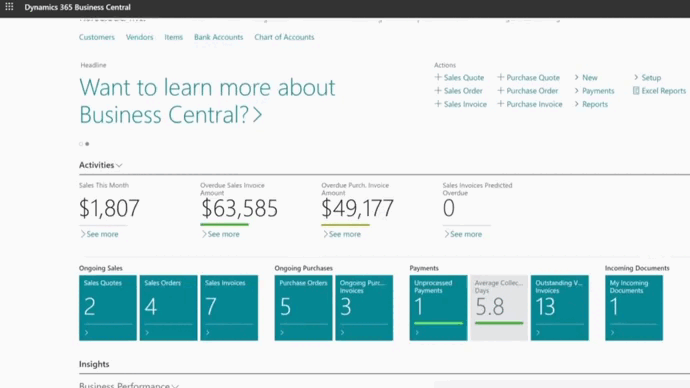The rise of subscription-based business models has transformed how companies deliver, consume, and account for software. Traditional one-time licensing has given way to Software as a Service (SaaS) — a model that generates continuous revenue through subscriptions rather than one-time sales.
For finance teams, this evolution has introduced a new layer of complexity. Unlike perpetual licenses, where revenue is recognized upfront, SaaS subscriptions require ongoing recognition and compliance with standards such as ASC 606. The solution? Implementing robust accounting SaaS software that helps organizations maintain transparency, automate recognition, and ensure financial accuracy across every billing cycle.
In this guide, we’ll explore how accounting SaaS software reshapes financial management, simplifies subscription models, and enhances compliance in the digital economy.
What is accounting SaaS software?
Accounting SaaS software refers to cloud-based financial management tools designed specifically for companies that operate on a subscription model. Instead of manual spreadsheets or traditional accounting systems, these platforms automate complex tasks such as:
- Revenue recognition across billing periods
- Deferred revenue management
- Subscription tracking and renewals
- Reporting and KPI monitoring (MRR, ARR, churn rate, etc.)
Unlike standard accounting tools, accounting SaaS software supports the nuances of recurring revenue, ensuring finance teams can record and report income accurately over time — not just at the point of sale.
The shift to SaaS-based accounting reflects a broader trend: finance teams no longer want static systems. They need flexible, scalable, and compliant tools that evolve with subscription-based growth.
Ready to adopt an accounting SaaS software?
Get in touch with our professionals today for a free consultation and discover Microsoft Dynamics 365 Business Central.
 Free discovery call
Free discovery call
Why proper SaaS accounting matters?
Accounting for SaaS businesses is more than a back-office function — it’s a strategic enabler. Implementing accounting SaaS software ensures finance teams can meet compliance standards, support investor confidence, and guide data-driven decision-making.
Accurate financial reporting
SaaS companies must adhere to strict accounting standards to represent their financial performance accurately. With automated processes, accounting SaaS software minimizes errors, producing reliable statements that stakeholders can trust.
Compliance with ASC 606
The ASC 606 framework standardizes how SaaS businesses recognize revenue. Accounting SaaS software simplifies compliance by automatically applying the five-step revenue recognition model to every contract, ensuring consistency and audit readiness.
Data-driven decision-making
With real-time visibility into subscription metrics, finance teams gain insights into recurring revenue, churn, and customer lifetime value — empowering leaders to make informed pricing, forecasting, and budgeting decisions.
Strengthened investor confidence
Investors rely on transparent financial data. Implementing accounting SaaS software demonstrates operational maturity and strengthens the credibility of financial statements during audits or funding rounds.
Revenue recognition in accounting SaaS software
Revenue recognition is at the heart of SaaS accounting. The ASC 606 model defines how and when revenue should be recorded, ensuring financial statements reflect the economic reality of the subscription relationship.
Understanding ASC 606 for SaaS
ASC 606 requires SaaS companies to recognize revenue as performance obligations are fulfilled — typically over time rather than at a single point.
The five-step model includes:
- Identifying the contract with a customer
- Determining performance obligations
- Calculating the transaction price
- Allocating the price across obligations
- Recognizing revenue as obligations are satisfied
Accounting SaaS software automates these steps, ensuring every subscription aligns with recognition rules and that deferred revenue transitions correctly into recognized revenue over time.
Recognizing revenue over time
In SaaS, customers continuously access services throughout their subscription period. Accounting SaaS software distributes revenue recognition accordingly — either straight-line, usage-based, or milestone-based — depending on how customers consume the service.
This ensures financial accuracy and eliminates the risk of prematurely recognizing revenue that hasn’t yet been earned.

Subscription models and their impact on accounting
The type of subscription model a company adopts directly influences how revenue is tracked, reported, and forecasted within accounting SaaS software.
Common subscription models
- Monthly subscriptions: Offer flexibility with predictable monthly recognition cycles.
- Annual subscriptions: Provide upfront cash flow but require deferred revenue tracking.
- Tiered pricing: Demands careful allocation across multiple performance obligations.
- Usage-based billing: Requires dynamic accounting for variable consideration tied to consumption.
Each model introduces unique recognition patterns, making automation through accounting SaaS software crucial for maintaining compliance and consistency.
Pricing strategy and accounting impact
Pricing strategies — freemium, value-based, or promotional — also influence how transactions are accounted for. Discounts, bundled services, and multi-tiered offerings create variable consideration that must be carefully recorded.
Accounting SaaS software tracks these variables in real time, ensuring adjustments are accurately reflected in both deferred and recognized revenue accounts.
How much can you save?
Download your free ROI Excel calculator to discover how much you can save when you implement Dynamics 365 Business Central today.

Key SaaS accounting metrics and KPIs
Beyond compliance, accounting SaaS software empowers finance teams to monitor business health through performance metrics and KPIs unique to subscription models.
Essential SaaS metrics
- Monthly Recurring Revenue (MRR): Predictable monthly income stream.
- Annual Recurring Revenue (ARR): Long-term financial stability indicator.
- Churn Rate: Percentage of lost customers, critical for forecasting.
- Customer Acquisition Cost (CAC): The investment required to gain a new subscriber.
- Customer Lifetime Value (CLTV): The total projected revenue per customer.
Why these KPIs matter
Tracking KPIs through accounting SaaS software allows finance leaders to evaluate profitability, customer retention, and scalability. High churn or poor CAC-to-CLTV ratios signal operational inefficiencies that can be addressed through better forecasting and pricing alignment.
Accurate tracking also provides the foundation for investor relations and strategic planning, ensuring that every financial decision is grounded in real-time data.

Overcoming SaaS accounting challenges
Even with advanced tools, accounting for SaaS companies presents several recurring challenges. However,accounting SaaS software can simplify these pain points when properly configured.
Managing churn and renewals
Churn directly affects revenue projections. Accounting SaaS software automatically adjusts deferred revenue and future forecasts when subscriptions are canceled or renewed, ensuring ongoing accuracy.
Handling deferred and unearned revenue
Because payments are often received in advance, deferred revenue must be recognized gradually. Accounting SaaS software tracks this process automatically, moving funds from liabilities to revenue as services are delivered.
Maintaining compliance and audit readiness
Regulatory compliance and audit preparation are simplified with automated audit trails, transparent transaction logs, and consistent adherence to ASC 606 — all built into the core of accounting SaaS software.
Navigating tax and jurisdictional complexity
As SaaS companies scale globally, tax compliance becomes increasingly complex. Accounting SaaS software centralizes data and helps teams apply the correct tax treatments across multiple regions.
Best practices for using accounting SaaS software
To maximize efficiency and compliance, finance teams should adopt best practices that ensure their accounting SaaS software delivers consistent, scalable value.
1. Automate recurring processes
Automate revenue recognition, invoicing, and renewals to reduce manual errors and free up time for analysis.
2. Establish clear revenue recognition policies
Define policies aligned with ASC 606 and integrate them into the accounting SaaS software to ensure every team member follows consistent standards.
3. Maintain internal controls
Implement segregation of duties, audit trails, and periodic reconciliations within the system to strengthen accuracy and prevent discrepancies.
4. Monitor KPIs continuously
Use dashboards and reports within accounting SaaS software to track MRR, churn, and CAC trends. Early visibility allows proactive decision-making.
5. Stay current with compliance
Regularly update your understanding of evolving accounting and tax standards to ensure the software configuration remains compliant.
6. Plan for scalability
As your subscription base grows, ensure your accounting SaaS software can handle increasing transaction volumes and more complex pricing models.
Book your free consultation with our experts today
Contact us for more details on our accounting SaaS software and how we can help you with the implementation of Business Central.
 Free discovery call
Free discovery call
The future of accounting SaaS software
The next evolution of accounting SaaS software will center on automation, artificial intelligence, and predictive analytics. Emerging systems are moving beyond compliance to become strategic partners in financial decision-making.
Finance teams will soon leverage predictive insights for revenue forecasting, customer retention modeling, and intelligent billing optimization — transforming accounting from a reactive function into a proactive growth driver.
Conclusion: transform your finance operations with Gestisoft
Accurate, compliant, and scalable accounting is the backbone of every successful SaaS business. By adopting the right accounting SaaS software, finance teams can streamline operations, ensure continuous compliance, and gain the insights needed to make smarter decisions.
Gestisoft specializes in helping organizations implement cloud-based accounting solutions that align with their subscription models and growth strategies.
If your finance team is ready to optimize its reporting, automate revenue recognition, and embrace the future of accounting, partner with Gestisoft — your expert ally in digital transformation.
Liked what you just read? Sharing is caring.

May 22, 2025 by Kooldeep Sahye by Kooldeep Sahye Marketing Specialist
Fuelled by a passion for everything that has to do with search engine optimization, keywords and optimization of content. And an avid copywriter who thrives on storytelling and impactful content.
